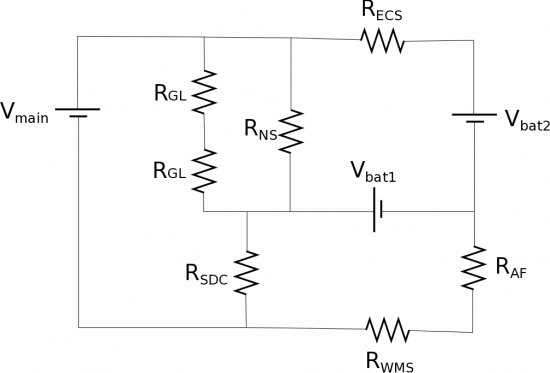Project: Artemis's Last Hope
In part thanks to your brilliant work with the lightbulbs and JPL, the Artemis 13 Spacecraft was able to have a successful launch. While on the way to the moon, disaster strikes. Among other things, the air filtration system seems to be malfunctioning. Team leader Melissa Lewis decides Artemis 13 needs to go home ASAP. Just as she gives the order to rotate boosters in order to send the ship home, the crew feels the spacecraft rock violently and warning lights start going off everywhere. The command ship starts to lose all of its power (maybe it had something to do with not being able to get the special tape from the STICKYSTUFF corporation at Lakeview). After a quick investigation, it turns out that the circuit that controls all of the key systems is currently drawing too much current from the battery. You are in constant communication with Austin about the issues you are encountering and a bright but intense intern proposes a risky but possibly brilliant solution. They want to take two batteries from the mostly dead Command Ship and use them to help power the Artemis. In addition to the 230 V main battery, they say they need 140 V ($V_{bat1}$) from the Command Ship battery and only 5 V ($V_{bat2}$) from the backup battery to get them home. From the ship manual you find the following resistances for different components that need to be powered in order to get you all home:
- Gauge Lights: $R_{GL}=100\Omega$
- Navigation System: $R_{NS}=700\Omega$
- Steering/Direction Control: $R_{SDC}=950\Omega$
- Engine Cooling System: $R_{ECS}=500\Omega$
- Air Filter: $R_{AF}=300\Omega$
- Waste Management System: $R_{WMS}=425\Omega$
Will this circuit work without drawing any more than the 0.35 A from the main battery?
Learning Goals
- Use resistor combination rules to simplify a complex circuit (or parts of a complex circuit)
- Recognize when resistor combination rules do not apply
- Use loop rule and current rule to analyze a complex circuit
Conceptual Questions:
- How can you tell if two resistors are in series? Out of current, resistance, & voltage, what would HAVE to be the same for resistors in series? What would be different?
- How can you tell if two resistors are in parallel? Out of current, resistance, & voltage, what would HAVE to be the same for resistors in parallel? What would be different?
- How would you combine resistors (series or parallel) to decrease the total resistance? What about to increase the resistance?
- What is the loop rule in circuits? What conservation principle is it related to?
- What is the node rule in circuits? What conservation principle is it related to?
- What steps do you need to follow in order to use loop/node rules?
- If you have time at the end - you can revisit the challenge problem from Week 6
